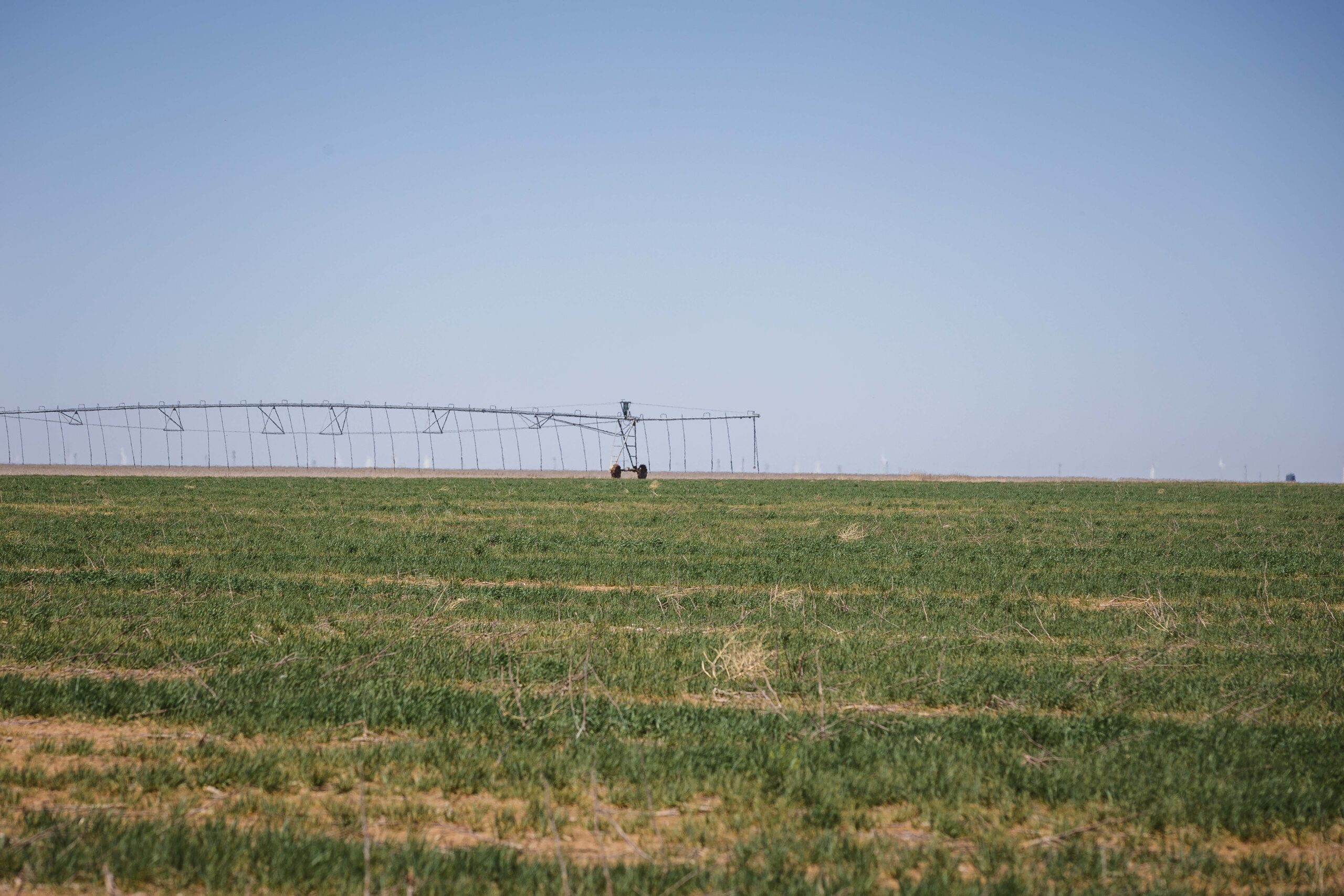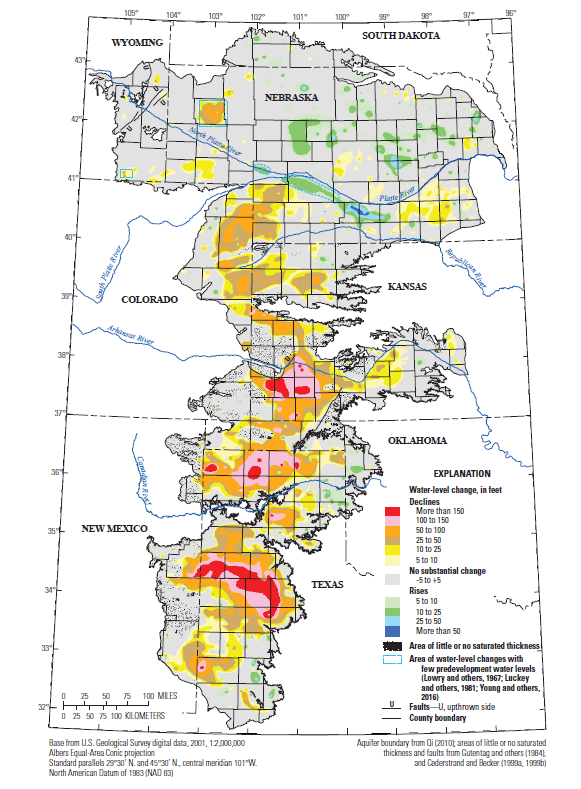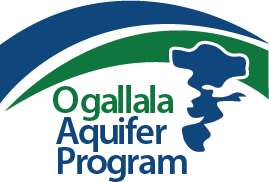The Ogallala Aquifer is the largest underground water reservoir in the United States, covering 174,000 square miles in Nebraska, Kansas, Oklahoma, Texas, South Dakota, Wyoming, Colorado and New Mexico. A major water source for regional agricultural, municipal and industrial development, the Ogallala is being depleted as withdrawals exceed recharge.
Since 2003, the Ogallala Aquifer Program has worked to improve the sustainability of agricultural industries and rural communities through innovative scientific research and technology transfer.

Sustaining economic activity from the Ogallala Aquifer through new water management technologies

Recent News
- Improving water efficiency in KansasA community-backed approach combined with technological advancements drive more efficient on-farm irrigation. Read the article by Amy Wunderlin at Irrigation Today
- Different States, Different Management StrategiesBy Leslie Lee, published in Texas Water Resources Institute’s summer 2024 issue of txH2O magazine
- As the Ogallala Aquifer Dwindles, West Texas Farmers Face a Future Without Irrigated CropsBy Forrest Wilder, Texas Monthly The rains don’t come like they used to, and Glenn Schur can’t rely on the once bountiful water beneath the clay loam soil of the South Plains—the largest cotton-producing area in the… Read more: As the Ogallala Aquifer Dwindles, West Texas Farmers Face a Future Without Irrigated Crops
- Kansas farmers brace for water cuts to save Ogallala AquiferBy Allison Kite, Kansas Reflector and Kevin Hardy, Stateline JETMORE, Kan. — An inch or two of corn peeks out of the dirt, just enough to reveal long rows forming over the horizon. Sprinkler engines… Read more: Kansas farmers brace for water cuts to save Ogallala Aquifer








